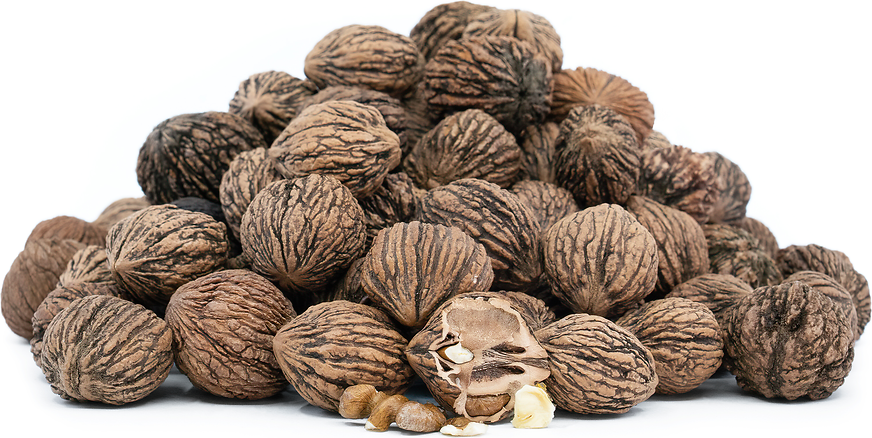


Foraged Black Walnuts
Estimated Inventory, lb : 0
Description/Taste
The Black walnut is composed of an inner kernel, which is surrounded by a hard round shell that is made of two distinct halves. The Black walnut is green when immature and turns a dark brown to black color when ripe. The Black walnut has a creamy and sweet buttery flavor.
Seasons/Availability
Black walnuts start falling off the tree in late summer to early fall.
Current Facts
The Black walnut (Juglans nigra) is a member of the Juglandaceae or walnut family. Also known as American walnut, the Black walnut tree is one of the largest hardwood trees in the United States and is valued both for its nuts and bark. The nuts are harvested and used as a food source. The wood of the Black walnut tree is known to be one of the finest available and is used to build furniture, gunstocks, flooring and veneers. The shell of the Black walnut is also utilized in exfoliating cosmetic products, as a means of filtration for separating crude oil from water as well as to make abrasive cleansers/polish for metals, wood and fiberglass.
Nutritional Value
Black walnuts are an excellent source of protein and contain iron and fiber. They are also low in saturated fats and high in polyunsaturated and monounsaturated fats, both of which have been shown to lower cholesterol levels. The Black walnut tree contains a chemical called Juglone, an alleopathic that can inhibit the growth of certain plants grown near the Black walnut tree such as apple trees and tomatoes. The pollen of the Black walnut tree is also known to produce an allergic reaction in horses and humans as well.
Applications
Black walnuts can be used in most recipes where traditional walnuts are called for. Chop and use in cakes, cookies, pies, ice cream, candies and muffins. Toast and add to salads, stuffing, pasta and rice preparations. Finely chop and use to make a crust for chicken and fish. The nut meat can also be used to make oil and compound butter or used in lieu of pine nuts when making pesto.
Ethnic/Cultural Info
Native Americans had a variety of different uses for the Black walnut tree. They drained its sap to make syrup and used the nut meat as a source of food. They also used the bark of the Black walnut to make a medicinal tea and to make dark brown or black dye.
Geography/History
The Black walnut tree is native to Eastern North America but can be found growing today predominately throughout the Midwest and East-Central United States as well as in parts of Southern Canada. Black walnut trees prefer moist well drained soils and ample sun exposure. While some trees will produce nuts as early as 4-6 years old a full crop of nuts typically does not occur until trees are at least 10 years old.
Recipe Ideas
Recipes that include Foraged Black Walnuts. One
| Hip Foodie Mom |
|
Apple Walnut Tart with Maple Custard |
| Kitchen Parade |
|
Old-Fashioned Black Walnut Chocolate Cake |












